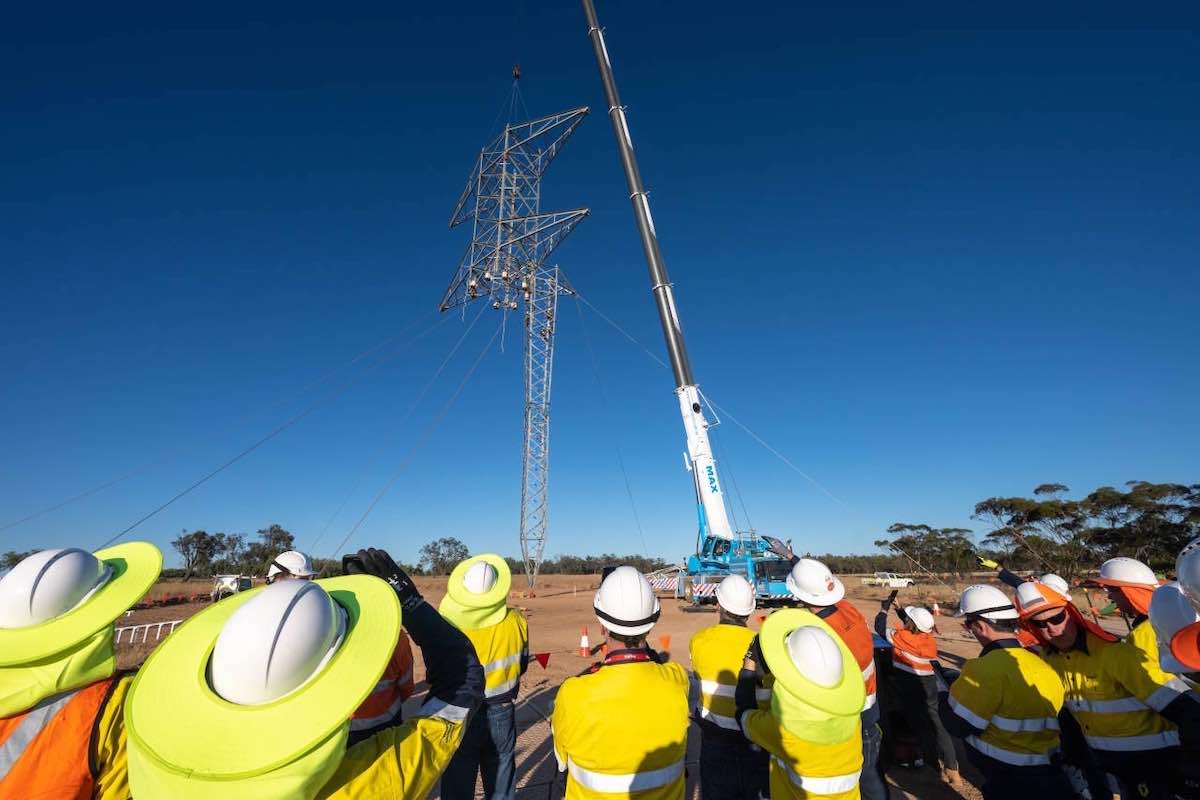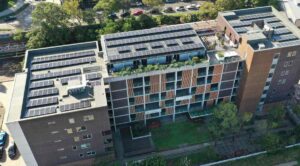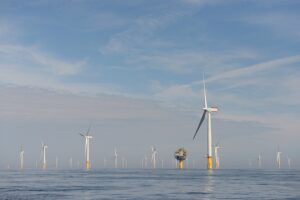Australian transmission operator Transgrid has lifted the first towers on what will be the country’s largest electricity transmission project, the $1.8 billion EnergyConnect project linking NSW and South Australia.
The EnergyConnect project, which also includes a branch line into Victoria, will unlock vast amounts of renewable and storage projects along its 700km route and will accelerate the leap towards 100 per cent renewables in states such as South Australia.
That’s because – apart from unlocking new wind and solar projects – it will also mean more wind and solar can be exported, rather than curtailed, and offers greater grid “security”, meaning that gas generators are not required to run in the background.
Transgrid, which owns the high voltage transmission network in NSWS and the ACT, says the first of 1,500 steel towers that will stretch from from Wagga Wagga to the South Australian border, with a branch connection to Red Cliffs in Victoria, have been lifted into place.
The first guyed towers were erected using 230-tonne crane at Buronga, near Mildura. Unlike many of the more commonly-seen “Ned Kelly’s”, this transmission tower sits atop a central mast and is held in place by four steel cables.
Thus, according to Transgrid CEO Brett Redman, “this type of tower requires about 15 per cent less steel and 25 per cent less concrete in construction, achieving a reduced carbon footprint.
“It is just one of the ways Transgrid is delivering more sustainable outcomes on our transmission projects as we lead the transition to a clean energy future.”
Transgrid also gave an update on the upgrades to its Buronga substation which is set to become the main hub for energy sharing between the three states. Earthworks have already been completed on the substation, and concrete foundations are now being poured.
“The 16-hectare expansion of the Buronga substation is the equivalent of 20 football fields and, once operational, it will be one of the largest and most complex substations in the Southern Hemisphere,” said Redman.
The remaining part of the Project Energy Connect is being built on the South Australian side by that state’s transmission network owner ElectraNet.










